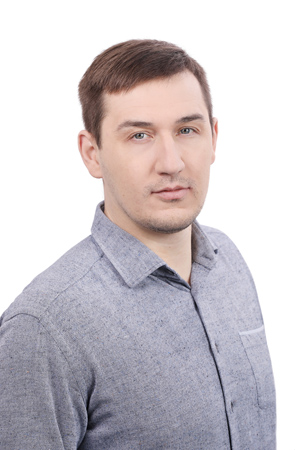Mammography - we believe that today this word is not just familiar to women, that the absolute majority knows how important such a study is. Starting from the age of 40, it should be taken regularly, and we do not get tired of reminding you about it.
We will also tell you some interesting facts that usually remain "behind the scenes". What happens when you undergo a mammogram and what does our doctor Andrii Gurando see on a mammogram?
So the radiologist looks at your mammogram. If it is possible, and you have saved the results of the previous examination, the doctor will compare them, analyze whether they coincide. If the results have not changed, you most likely do not have cancer and will not need further tests.
The doctor reading your mammogram will look for different types of breast changes, such as small white spots called calcifications, cysts or tumors called masses, and other suspicious areas that could be signs of cancer.
Calcinates
Calcinates are deposits of calcium in breast tissue. They look like small white spots on a mammogram, can be caused by cancer, or can be benign in nature. There are two types of calcifications.
Macrocalcifications
Macrocalcifications are large deposits of calcium that are associated with changes caused by aging of the mammary arteries, possible trauma or inflammation. Such deposits are usually not malignant, and there is no need to perform a biopsy. Macrocalcifications become more common as women age, especially after 50 years.
Microcalcifications
Microcalcifications are tiny particles of calcium in the breast. When they are present on a mammogram, they cause the doctor more concern than macrocalcifications, although they do not always mean cancer. The shape and location of the microcalcifications help the radiologist judge how likely it is that changes in the breast are related to cancer. In many cases, microcalcifications should not be tested by biopsy. But if our doctor sees that they have a suspicious appearance and character, he definitely recommends a biopsy to rule out or confirm cancer.
Educations With or without calcifications is another important change that a doctor can see on a mammogram. Lumps come in many forms, including cysts and non-cancerous growths such as fibroadenomas, but they can also be a sign of cancer.
Cysts are fluid-filled sacs. Simple cysts (fluid-filled sacs with thin walls) are not cancer and do not need to be tested with a biopsy. If any lump is not a simple cyst, a biopsy may be needed to make sure it is not cancer.
Both a cyst and a tumor can feel the same. They can also look similar to a mammogram. That is why the experience of the doctor is so important, who must confidently distinguish between them. Often, an additional ultrasound of the mammary glands is performed to fully examine the fluid-filled sacs. Another option is to use a fine needle to remove (aspiration) the fluid.
If the formation is not a simple cyst, that is, if it is at least partially solid, more imaging studies may be needed. Some formations are monitored with regular mammograms or ultrasounds so as not to miss any changes; others must be tested with a biopsy. Which ones exactly? The size, shape and edges of the tumor will give an experienced radiologist the answer to this question so that the doctor can decide how likely cancer is.
Breast density
Your mammogram decision will also include an assessment of breast density. This score is based on how the fibrous and glandular tissue is distributed in your breast.
Dense breasts are not a deviation from the norm, but still in this case there is a higher risk of cancer. However, many experts disagree that women with dense breasts who are not at high risk (based on gene mutations, a family history of breast cancer, or other factors) should have additional tests in addition to mammography.Now you know a lot about mammography. "Don't forget the main thing," reminds our doctor Andriy Gurando, "early detection saves lives!"







